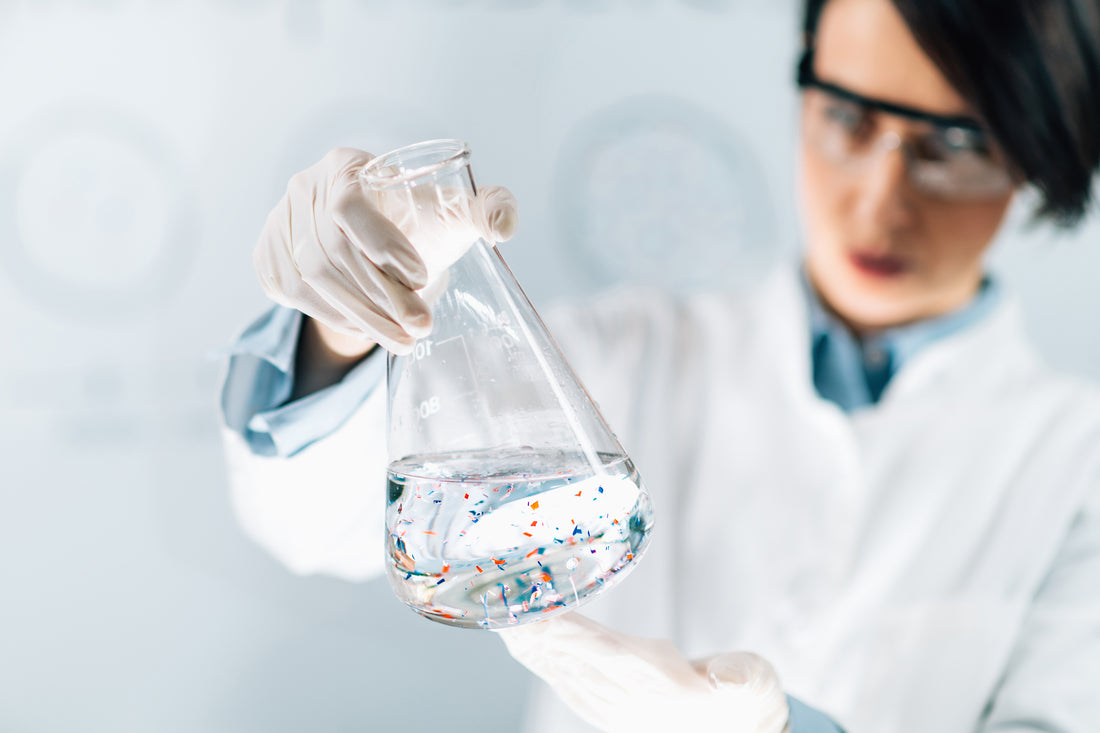
California Becomes First in World to Develop Health Guidelines for Microplastics in Drinking Water
By Romero Halloway
California will become the first government in the world to develop formal health guidelines for microplastics in drinking water, a sign of increasing concern about the ubiquity of small non-biodegradable pieces of plastic in the environment and their potential harm to human health.
Small pieces of plastic, some so small a microscope is needed to detect them, are ending up in the environment, in wildlife, and in humans at increasing rates prompting public health officials and drinking water regulators to fret about the potential human health effects.
Currently, there is no scientific consensus about whether microplastics have deleterious effects on human health because testing for long-term health effects is both a protracted and laborious process.
But in a recent review of the scientific literature, Stephanie Wright and Frank Kelly, researchers with Kings College in London, said preliminary research indicates that microplastic ingestion “could lead to a suite of biological responses including inflammation, genotoxicity, oxidative stress, apoptosis, and necrosis. If these conditions are sustained, a range of outcomes can ensue including tissue damage, fibrosis, and carcinogenesis.”
Fibrosis describes scarring of internal tissue. Carcinogenesis describes the initiation of cancerous cell growth in the body.
The short story is that researchers are not completely sure whether microplastics are inimical to human health but have plenty of cause for concern.
Part of the reason is that microplastics harbor chemical additives, many of which are pestilential and could leak into the environment, wildlife, or the human body.
“Microplastics may harbor endogenous chemical additives, due to their incorporation during the manufacture of plastic products,” Wright and Kelly write in their review. “Because these additives are not chemically bound to the plastic polymer matrix, they are susceptible to leaching to the external medium.”
It is the potential for microplastics to harm humans and their omnipresence throughout the environment that has prompted California to take swift action in determining suitable levels of microplastics in drinking water.
“We now know that we live in a soup of plastic that is getting ever denser. And we don’t seem to be changing our ways. And the contaminants, they live longer than we do, meaning that the soup will get thicker,” Rolf Halden, director of the Biodesign Center for Environmental Health Engineering at Arizona State University, told CalMatters in March.
“So, is it too early to do something? No, it is actually a bit late.”
However, problems remain.
The World Health Organization released a report in August 2019 that stated a lack of standard methods for sampling and detecting microplastics in drinking water means it is difficult to fully analyze the problem and compare contamination levels among different jurisdictions.
“We urgently need to know more about the health impact of microplastics because they are everywhere - including in our drinking water,” said Dr. Maria Neira, Director, Department of Public Health, Environment and Social Determinants of Health, at WHO in 2019.
The health organization was careful to say that microplastics at current levels are not proven to be a danger, but also said more study was needed, particularly around the issue of nano plastics, which are more likely to accumulate in the human body.
The WHO recommended establishing standard methods of measurement, identifying the source of microplastics in freshwater, and investigating which water treatment methods may be effective at eliminating microplastics from water.
We here at VITRI applaud the efforts to develop such standards and practices, but drinking water is only one of the many pathways that microplastics can enter the human body. A recent study published in Environmental Science and Technology found that a vast majority of microplastics enter the human body through air. In other words, we are breathing it in. Microplastics can also shed from some plastic-lined cups.
For this reason, VITRI is convinced the best way to confront the problem of microplastics is to reduce our dependency on plastic as a material. Individual consumers can stop using single-use plastics to the extent possible and demand large corporations that use plastic packaging find alternative materials.
Our contribution to the solution portfolio is to create an alternative to single-use plastic, particularly as it relates to hot or chilled beverages like coffee and tea. A reusable non-plastic product can help salve the environmental wounds created by the overproduction of plastic.
Our team is committed to making durable and sophisticated products that rival the convenience of plastics without the environmental burden. We believe technology and design innovations can revolutionize how Americans and the world consume products in concert with the health of the environment. Please stay tuned to our website, blog, and upcoming Kickstarter page as we unveil a product fully capable of providing the convenience and sustainability that will consign the concept of disposable plastics to the garbage heap of history.
Editor's Note: This post has been updated to reflect our rebranding to VITRI.
